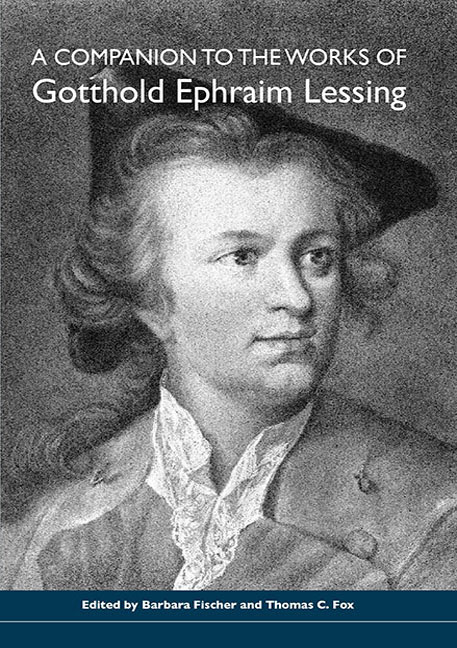Book contents
- Frontmatter
- Contents
- List of Illustrations
- Acknowledgments
- Lessing Editions and Abbreviations
- Selected Works by Lessing
- Introduction
- Lessing's Life, Work, and Times
- Lessing's Life and Work
- Lessing and the European Enlightenment
- Criticism and Aesthetics
- Philosophy and Theology
- Drama and Drama Theory
- Reception
- Contact Organizations
- Works Cited
- Notes on the Contributors
- Index
Lessing's Life and Work
from Lessing's Life, Work, and Times
Published online by Cambridge University Press: 28 April 2017
- Frontmatter
- Contents
- List of Illustrations
- Acknowledgments
- Lessing Editions and Abbreviations
- Selected Works by Lessing
- Introduction
- Lessing's Life, Work, and Times
- Lessing's Life and Work
- Lessing and the European Enlightenment
- Criticism and Aesthetics
- Philosophy and Theology
- Drama and Drama Theory
- Reception
- Contact Organizations
- Works Cited
- Notes on the Contributors
- Index
Summary
Wie lange währts, so bin ich hin, Und einer Nachwelt untern Füßen? Was braucht sie wen sie tritt zu wissen? Weiß ich nur wer ich bin.
— G. E. Lessing, “Ich”Wir verlieren viel viel an ihm, mehr als wir glauben.
— J. W. Goethe to Charlotte von SteinWe can only speculate as to what Gotthold Ephraim Lessing's self-analysis, cited above, might have revealed. By the same token we have no certitude as to what Goethe meant when he responded to Lessing's death in 1781 with the remark that we have lost much, much more than we know. Yet if we summarize the many tributes of the past centuries to Lessing, the great man of letters born in a modest Lutheran parsonage, the following statement captures some of his salient traits: Lessing lived and worked at an important point in German intellectual history. He stands between the rationalist philosophy of Spinoza and Leibniz and emergent German idealism. In literature he helped Germans navigate away from Gottsched's neoclassicism, based on French models, to the Storm and Stress period, with its admiration of Shakespeare, and then to a new understanding of classicism with Goethe and Schiller. In religion he mediated between orthodox Christianity and the radical deists of his age. He did all this at a time when there existed no unified German nation.
Lessing worked in many spheres: literature and literary criticism, theology and philosophy, criticism, journalism, and translation. Despite the magnitude and versatility of his oeuvre, one can discern several recurring and unifying characteristics. Lessing employed a highly flexible, multidimensional, dialectical mode of thought. For him, thinking meant searching; the anti-dogmatic idea that no fixed truth exists (except with God) served him as guide. As a result, regardless of Lessing's sphere of activity, he vigorously put everything into question. He attacked prevalent opinions and “truths” with a polemical energy that proved often rude but always brilliant. He believed in development through contradiction, in progress through education. In his early, unfinished Das Christentum der Vernunft (The Christianity of Reason, published posthumously in 1784) he expresses his belief that humankind can approach perfection, the absolute perfection reserved for God alone.
- Type
- Chapter
- Information
- A Companion to the Works of Gotthold Ephraim Lessing , pp. 13 - 40Publisher: Boydell & BrewerPrint publication year: 2005



